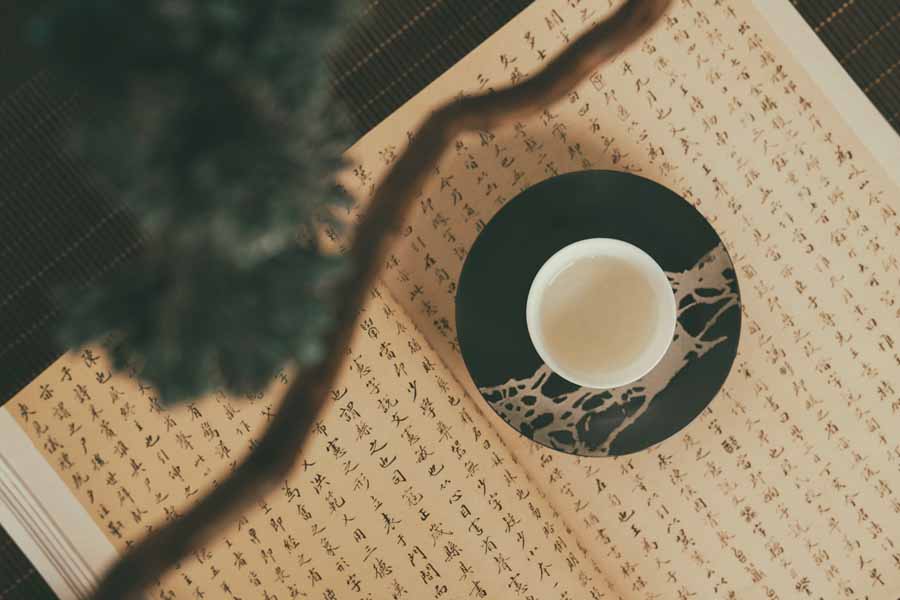In China, calligraphy refers to the art of writing Chinese characters with a brush. In the history of Chinese art, calligraphy has always been held in equal importance to painting. From ancient times to the present, Chinese calligraphy was appreciated for its aesthetic quality, and today it is regarded as one form of art. Chinese calligraphy focuses not only on methods of writing but also on cultivating one’s character and is taught as a pursuit of a lofty spiritual realm.
With the development of Chinese characters, Chinese calligraphy developed into various styles from ancient seal script to clerical script,semi-cursive script, cursive script and regular script. In the process of writing and applying Chinese characters, Chinese calligraphy has gradually become a unique and independent art in the world. Chinese calligraphy is known as speechless poetry, intangible dance, and silent music.
The Art of Writing
Chinese calligraphy is an art of self-cultivation and self-expression. It reflects the mindset and mood of the writer, and fully embodies the unique beauty of Chinese script.
Different from paintings, Chinese calligraphy uses Chinese characters as its vehicle of expression to communicate the spiritual world of the artist. One does not have to know Chinese to appreciate its beauty since calligraphy, in essence, is an abstract art. It is so abstract and sublime that in Chinese culture it is universally regarded to be the most enlightening art form. Just as one person’s appearance differs from others, so one person’s handwriting differs from the others. Through its unique word structures, writing styles, and way of handling the brush, calligraphy, as a work of art, conveys the moral integrity, character, emotions, esthetic feelings and culture of the artist to readers and charms them with appealing beauty. So it is believed among a lot of people that we can tell a person’s character through his or her handwriting.
Chinese characters evolved from pictures and signs, and the Chinese art of calligraphy developed naturally from its unique writing system. Great calligraphers developed representative calligraphic styles of their times through the ages. The love of calligraphy is deeply ingrained in Chinese scholars and has been handed down to the present day.
Just like Qigong, the Chinese brush calligraphy can temper a person into a state in which one can apply intuition got from daily practice to control the concentration of ink and the size of each stoke or word. Calligraphy is considered an active way of keeping oneself fit and healthy, for the practice is relaxing and self-entertaining. Historically, many calligraphers were well-known for their longevity.
The Main 7 Styles of Chinese Calligraphy
Oracle Bone Script(甲骨文)
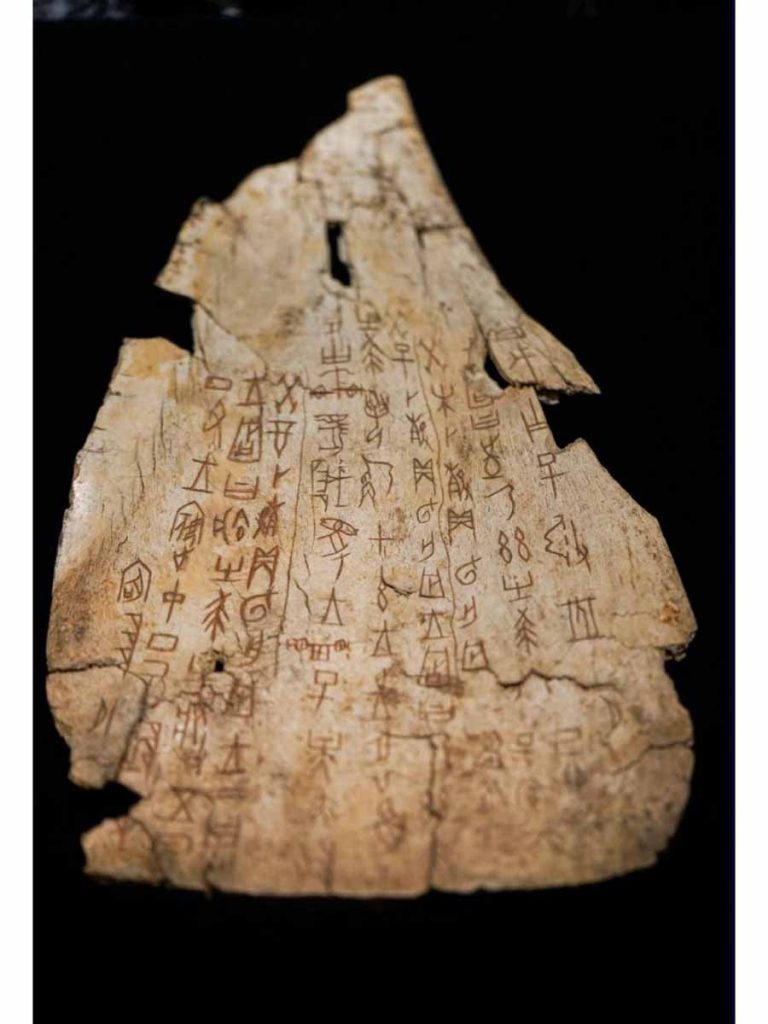
Oracle bone script was one of the forms of Chinese characters written on animals’ bones. Written on oracle bones—animal bones, it is the earliest known form of Chinese writing. The first appearance of what we recognize unequivocally to refer to as “oracle bone inscriptions” comes in the form of inscribed ox scapula and turtle plastrons from sites near modern Anyang on the northern border of Henan province. The vast majority were found at the Yinxu site (in modern Anyang, Henan Province). They record inscriptions of the last nine kings of the Shang Dynasty, beginning with Wu Ding, whose reign time is approximately 1250 BC – 1192 BC, assumed by different scholars.
Bronze Inscription(青铜器铭文)
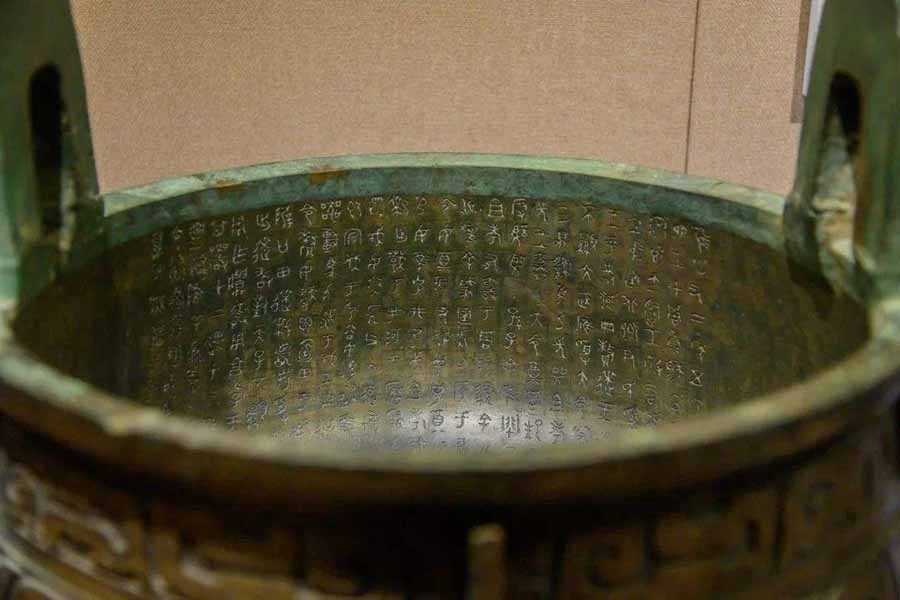
The bronze inscription refers to the characters cast by the ancients on the bronzes to record the reason for casting the bronzes, the figures who are commemorated or sacrificed. There are different ways to inscribe inscriptions in different historical periods. The bronze inscriptions of the Shang Dynasty were cast together when the bronze was cast. Later, the inscriptions of the Western Zhou Dynasty and the Spring and Autumn Period were printed after the bronze tools were cast and formed. The bronze inscription is the oldest type of writing, which is developed on the basis of oracle bone inscriptions.
Seal Script (篆书)
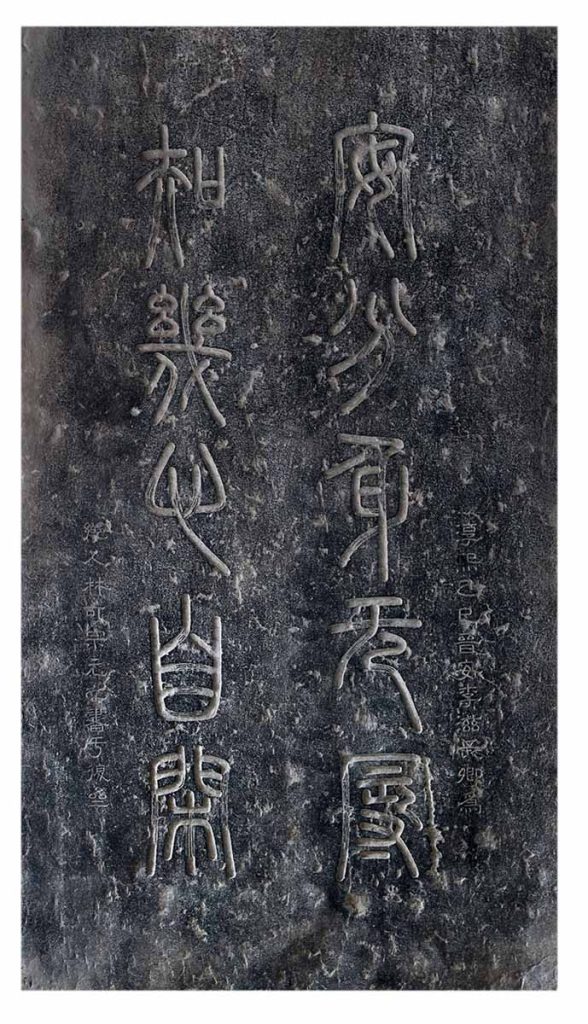
Seal script is an ancient style of writing Chinese characters that were common throughout the latter half of the 1st millennium BC. It evolved organically out of the Zhou Dynasty script. In the beginning, seal script lacked uniformity and many characters were written in invariant forms. In 221 B.C., the first emperor of Qin unified the whole of China under one central government, and he ordered Li Si to collect and sort all the different systems of writing hitherto prevalent in different parts of the country in a great effort to unify the written language under one system. Li Si successfully completed the task and created the ancient zhuan (small seal)script. From then on, the Qin variant of seal script eventually became the standard, and was adopted as the formal script for all of China during the Qin dynasty. Today we have a most valuable relic of this ancient writing in the creator Li Si’s own hand-engraved on a stone standing in the Temple to the God of Mount Tai in Shandong Province. The 2200-year-old stone, worn by age and weather, has only nine and a half characters left on it.
Clerical Script(隶书)
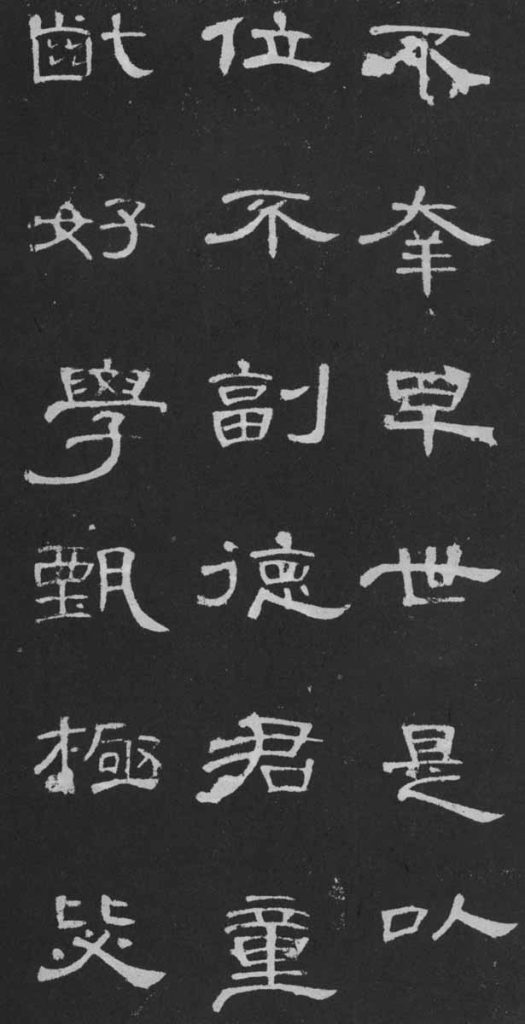
The clerical script is an archaic style of Chinese calligraphy and it is popular in East Han Dynasty. The clerical script is considered a form of the modern script because the graphic forms written in a mature clerical script closely resemble those written in standard (regular) script. The standard writing today is square in form, non-cursive and architectural in style.
Regular Script (楷书)
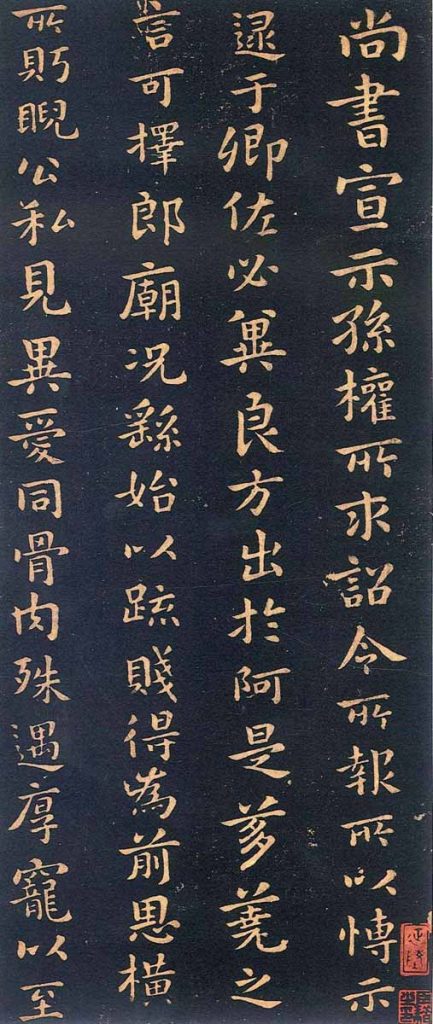
Regular script (or standard script) is the newest of the Chinese script styles. The regular script first came into existence between the Han and Wei Dynasties, even though it is not popular. The regular script became mature stylistically around the 7th century. The first master of the regular script is Zhong Yao. Zhong Yao first used regular script to write some very serious pieces such as memorials to the emperor. He is known as the “father of regular script”.
Semi-cursive Script(行书)
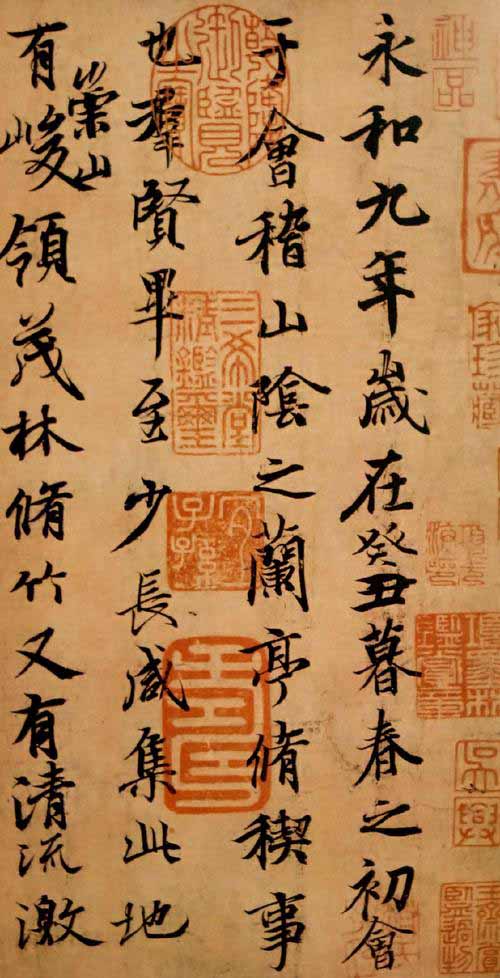
The semi-cursive script is a cursive style of Chinese characters. Because it is not as abbreviated as cursive, most people who can read regular script can read semi-cursive. It is highly useful and also artistic.
The best example and model for the semi-cursive script, all Chinese calligraphers will agree, is the inscription Preface to the Lanting Pavilion Collection in the hand of Wang Xizhi (321-379) of the Eastern Jin Dynasty. To learn to write a nice hand in Chinese calligraphy, assiduous and persevering practice is necessary. This has been borne out by the many great masters China has produced. Wang Xizhi, the great artist just mentioned, who has exerted a profound influence on, and has been held in high esteem by, calligraphers and scholars throughout history, is said to have blackened all the water of a pond in front of his house by washing the writing implements in it after his daily exercise.
Cursive Script(草书)

Cursive script originated in China during the Han Dynasty through the Jin Period. The cursive script is faster to write than other styles, but difficult to read for those unfamiliar with it. The “grass” in Chinese was also used in the sense of “coarse, rough; simple and crude.” It would appear that 草 in the term 草书 (literally grass script) was used in this same sense. The cursive script has broad and narrow meanings. In the broad sense, it is non-temporal and can refer to any characters which have been hastily written. In the narrow sense, it refers to the specific handwriting style in Han Dynasty. This style is subdivided into two schools: Zhangcao and Jincao (modern cursive). The characters written in Zhangcao, though written rapidly, still stand separate one from another and the dots are not linked up with other strokes. Jincao is said to have been developed from Eastern Han Dynasty, flourished in the Jin and Tang dynasties and is still widely popular today. It is the essence of Jincao, that the characters are executed swiftly with the strokes running together. The characters are often joined up, with the last stroke of the first merging into the initial stroke of the next. They also vary in size in the same piece of writing, all seemingly dictated by the whims of the writer.
A great master at the cursive script was Zhang Xu of the Tang Dynasty, noted for the complete abandon with which he applied the brush. It is said that he would not set about writing until he had got drunk. His original writing style is to utilize the brush to gallop across the paper, twisting or meandering in one unbroken stroke. Today one may still see fragments of a stele carved with character in his handwriting, kept in the Provincial Museum of Shaanxi.
The Four Treasures of the Study
The ink brush, ink, paper, and ink stone are essential tools of Chinese calligraphy. They are known together as the Four Treasures of the Study. In addition to these four tools, a water-dropper, desk pads and paperweights are also used by calligraphers.
Brush
A brush is the traditional writing instrument for Chinese calligraphy. The body of the brush is commonly made from bamboo or other materials such as wood, porcelain, or horn. The head of the brush is typically made from animal hair, such as weasel, rabbit, deer, goat, pig, tiger, wolf, etc. On the basis of function, brushes are classified into three groups: hard, soft and both.
Ink and Inkstick
Ink is made from lampblack (soot) and binders, and comes in inksticks which must be rubbed with water on an ink stone until the right consistency is achieved. The ink stick is a unique pigment used for Chinese traditional painting and calligraphy. The most famous ink stick is Hui mo (Anhui ink stick), made of pines that grow on Huangshan Mountain in Anhui Province. Learning to rub the ink is an essential part of calligraphy study.
Paper
The paper was invented by Cai Lun in the Eastern Han Dynasty. While paper comes in many varieties, Xuan paper, produced in the Jing Prefecture of Xuanzhou (today’s Anhui Province), is considered the best for Chinese calligraphy. It is made from the Tatar wingceltis, as well as other materials including rice, bamboo, hemp, etc. The paper is soft and fine textured, suitable for conveying the artistic expression of both Chinese calligraphy and painting. With good tensile strength and mothproof quality, the paper can be preserved for a long time.
Ink Stone
Duan, She, and Tao(端砚、歙砚和洮砚) are three famous ink stones. Features common to all three slabs are the stone’s hardness and fineness. Although the stone is hard and fine, it is not dry or slippery. Using a hard, smooth stone, liquid ink can be produced easily by rubbing the ink stick against the stone. Inkstone is used to grind the solid ink stick into liquid ink and to contain the ink once it is liquid. Chinese ink stones are highly prized as art objects and an extensive bibliography is dedicated to their history and appreciation.
Summary
The modernization of writing tools has given rise to many types of calligraphy other than traditional brush-writings. Some contemporary Western artists also assimilated Chinese calligraphy into abstract art, yielding many excellent works. Today, Chinese calligraphy is still considered an elegant art form even in neighboring countries. As Chinese culture spread to Japan, Korea, Singapore and Vietnam, calligraphy has become a unique feature of Oriental art.

